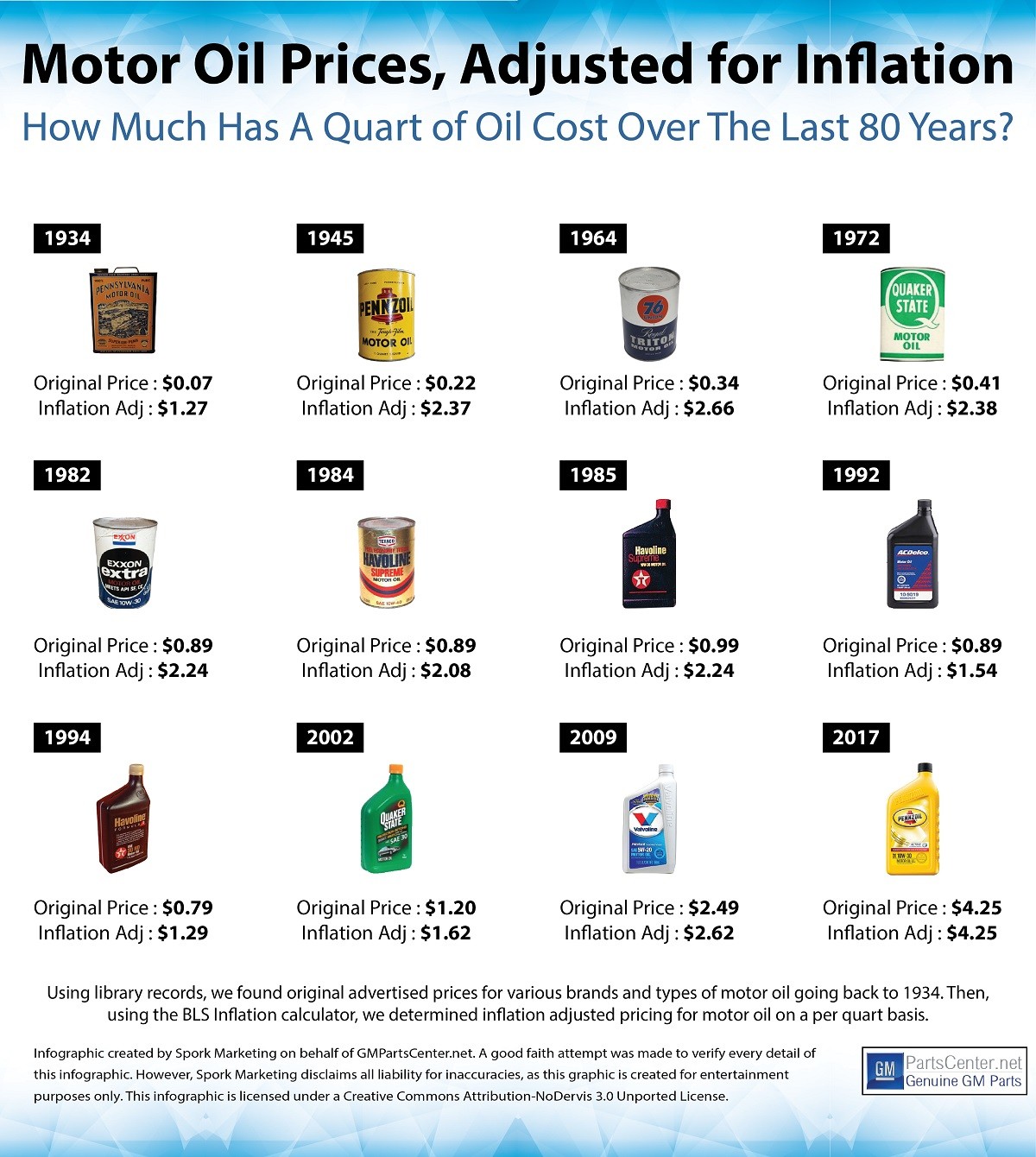GMPartsCenter.net’s New Graphic Reveals A Big Increase for Consumers
April 10, 2017 – A new graphic shows how the price of motor oil has changed since 1934, when adjusted for inflation. Created by GMPartsCenter.net, the chart shows the price for a quart of motor oil going back more than 80 years. The pricing data was found in public library records, and the inflation adjustment was done using Bureau of Labor data.
“When we put this data together, we were amazed to see relatively flat pricing for motor oil between 1934 and 2007,” says Matt Mylan, parts director at GMPartsCenter.net. “However, for reasons that aren’t obvious, the price of a quart of conventional motor oil has nearly doubled in the last decade compared to the historical average.”
The chart shows pricing for conventional motor oil on a per quart basis. In 2017, conventional motor oil is available for $4.25 a quart on the low end, with some conventional brands charging more. Looking over the historical price for a quart of conventional motor oil, 2017 pricing seems to be an outlier. After adjusting for inflation, motor oil prices have been close to $2 per quart for most of the last 80 years.
“I’d like to say I know why conventional motor oil costs twice as much today as it did even 10 years ago, but I have no idea,” says Mylan. “I have some theories – a regulatory change, perhaps – but it really is perplexing.”
In addition to documenting the price of motor oil since 1934, the graphic also shows how much motor oil packaging has changed over the years. From more sophisticated graphics to the switch from cans to bottles in the mid-80s, motor oil packaging changes are dramatic.
“In the early days, motor oil was often sold in 5 gallon cans. These cans were sometimes made from metal, and sometimes had cardboard sides with a metal spigot. It took many decades to get to the plastic quart bottles we use today.” says Mylan. “Lately, we’ve seen oil sold in pouches. Considering how much motor oil packaging designs have changed, this chart could look really different in another 10 years.”

